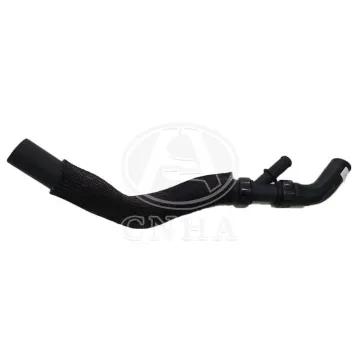Silicone vs Rubber Radiator Hose
Oct. 15, 2021
Over the last thirty years or so, the construction and materials of rubber radiator hoses have evolved considerably. For example, unlike radiator hoses manufactured thirty years ago, which contained a large amount of unstable natural rubber, modern radiator hoses are most often made from EPDM (ethylene propylene diene monomer) rubber compounds.
Advantages of rubber radiator hoses
-Most OEM rubber radiator hoses are rated for a maximum coolant temperature of approximately 2570F, which is much higher than the coolant temperature in a normally operating engine.
-The advanced chemistry and performance of rubber radiator hoses combine to give modern rubber hoses a life expectancy of six years, often longer.
-High density EPDM material translates into extremely low permeation rates, which largely prevents high quality engine coolant from passing through the rubber hose walls over time.
-Rubber radiator hoses are at least an order of magnitude more cost effective (and much cheaper) than comparable silicone hoses.

Silicone hoses
High quality silicone hoses made by reputable manufacturers are usually made from pure silicone moulded or extruded to exact specifications and sizes. However, high quality silicone radiator hoses will always contain one or more layers of braided polyester as a way of reinforcing the hose walls and in some cases silicone hoses may also contain a steel wire reinforcement layer to prevent the hose from collapsing under suction conditions (for example when the engine cools quickly). In practice, silicone radiator hoses are a viable direct alternative to rubber hoses.
Advantages of silicone radiator hoses
-Most high quality silicone radiator hoses are safe to use at coolant temperatures up to 350°F (although most thermostats used in road vehicles open and close at temperatures well below this). It should be noted, however, that by the time engine coolant reaches that temperature, the engine has almost certainly suffered fatal heat damage, making the high temperature rating useless in most applications.
-Silicone radiator hoses are available in a wide range of colours, which is great if you want to add style and flair to the engine compartment of your car.
-Silicone rubber is more likely to retain its flexibility in harsh conditions than rubber hoses.

Silicone radiator hose vs rubber
There is no simple answer to this question, as correctly fitted, high-quality rubber and silicone hoses perform well in the vast majority of cases.
Conclusion
Given that OEM rubber radiator hoses often come with a meaningful warranty, careful consideration must be given before replacing OEM rubber hoses with auto-assembly silicone hoses. Despite the price increase, silicone hoses usually do not come with any kind of warranty at all.
Overall, when choosing between rubber and silicone radiator hoses, our general advice is to stick with rubber hoses as the high value option unless your particular situation requires a switch to silicone. That is, if you're modifying your vehicle and the silicone hoses fit your performance or style preferences, there's certainly nothing wrong with choosing a set of silicone radiator hoses if there's a trade-off.






